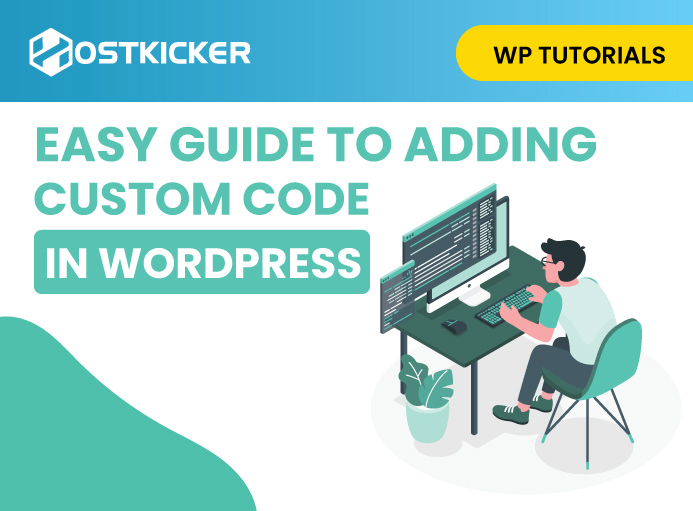Easy guide to adding custom code in WordPress
Do you often require to add custom code to your website and are looking for an easy and secure way to add it? Here’s how you can easily add custom code in WordPress site without breaking it.
Adding custom code snippets in WordPress is often done by editing the theme’s function.php file or using a site-specific plugin.
However, the major concern with adding a custom code is that even a small mistake can break the entire website, impacting your visibility on the internet.
If you are here to learn the easy way to add the custom code snippet to your site, continue reading the blog till the end. This simple guide will provide you with an easy-to-understand method for adding code and preventing your site from breaking.
So, without further ado, let’s get started!
Why adding custom code in WordPress is a major concern?
While managing and customizing a WordPress site, you might need to add code snippets using the function.php file of your theme or a site-specific plugin. Both are effective methods, but the major concern is that even the slightest mistake in your custom code can break your site, making it inaccessible to your users.
Also, adding the code snippet to your theme’s function.php file may not be suitable if you update your theme on a frequent basis. This is because updating your theme would remove all the customizations you implemented on your site.
On the contrary, if your use a site-specific plugin for adding code snippets, then adding multiple code snippets can make it difficult for you to manage the file.
That is why you must use a more adjustable and easier way to add and manage custom code in WordPress, which we will provide you in this blog.
How to add custom code in WordPress?
There are various code snippet plugins you can use to add custom code snippets to your site. However, to ease your search, we’ve discovered the top and most favored code snippet plugin that you can use for your website. That is WPCode.
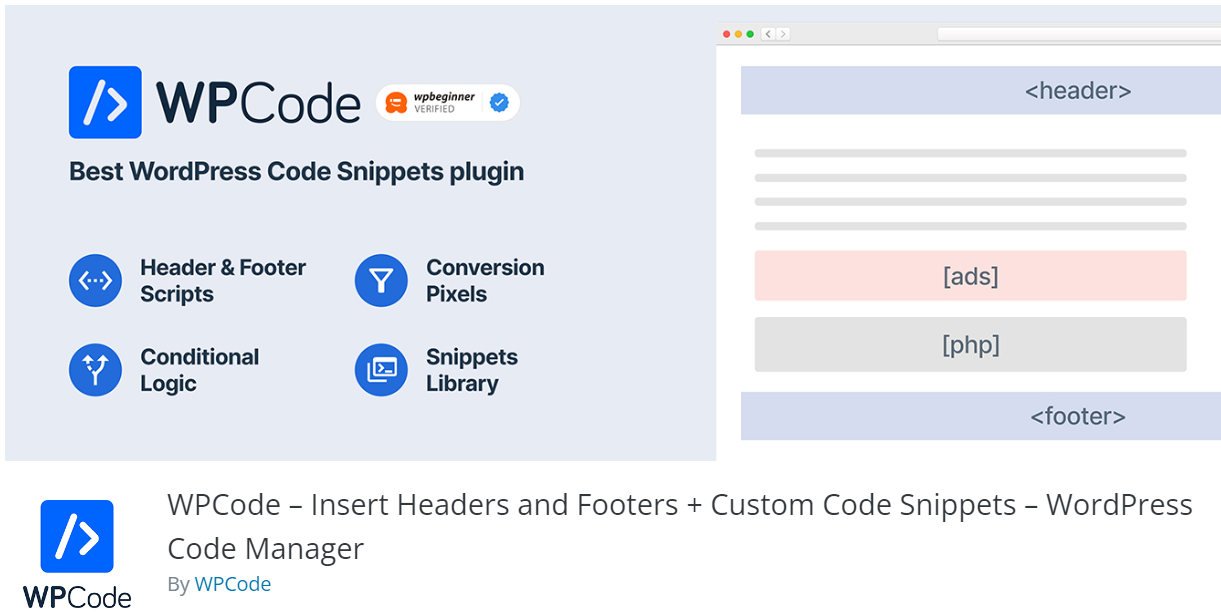
It’s a popular plugin that lets you easily add code snippets in WordPress easily, without requiring you to edit the function.php file of your theme.
WPCode comes with a smart code snippet validation feature that helps you prevent common code errors and prevent your site from breaking.
It also comes with an in-built snippet library where you can discover various popular WordPress code snippets which you can use for your site, such as disable comments, disable Gutenberg, disable REST API, and more.
Moreover, the plugin allows you to manage all your code snippets from one place and adds tags to organize them.
The plugin WPCode comes with free as well as paid versions. The free version also includes all the basic features you’d need to add custom code snippets to your website.
So, here’s the easiest way to add custom code in WordPress using WPCode.
Adding Custom code in WordPress using WPCode.
To get started with WPCode, you first need to install and activate it on your site. If you are new to plugin installation, you can also refer to our guide on how to install the WordPress plugin.
Once done, you can see that the plugin adds a new menu, ‘Code Snippets,’ to your WP.
Now, click on the ‘Code Snippets’ option to begin with WPCode. This will open a screen where you’ll witness all the code snippets you’ll add to your site.
Then, click on the ‘Add New’ tab to add your custom code snippet to your site.
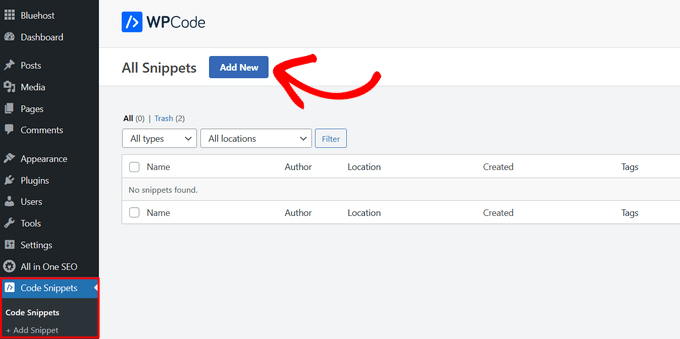
After clicking on this, a new ‘Add Snippet’ page will open, where you either add a new custom code or select a code snippet from the pre-made library.
Now to add a new customs code snippet, click on the ‘Use Snippet’ tab below the ‘Add Your Custom Code’ option.
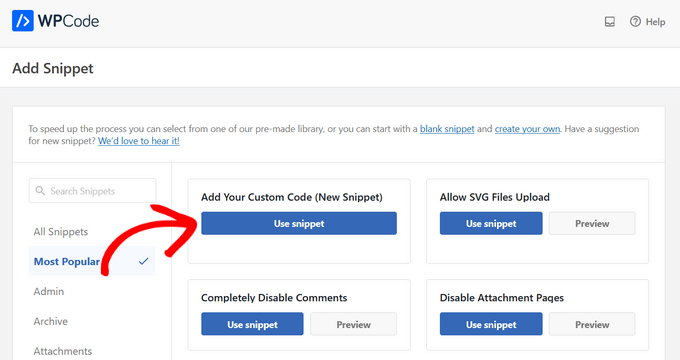
Enter a title for your custom code and then copy and paste your code snippet into the code box. Then select the right ‘Code Type’ from the right drop-down menu.
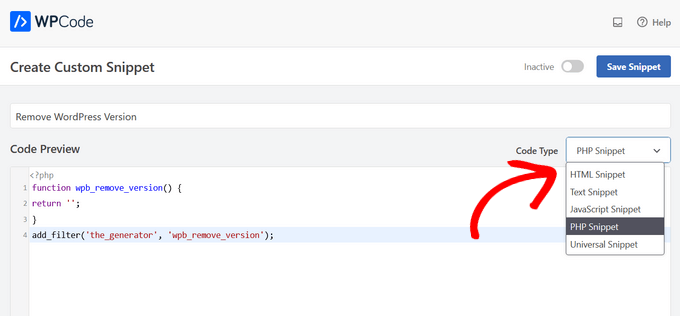
For this tutorial, we are using a code snippet to remove the WP version number from the WP site.
1 function wpb_remove_version() {
2 return ";
3 }
4 add_filter('the_generator', 'wpb_remove_version');
After adding the code, you’ll see two code insertion methods: Auto Insert and Shortcode(Default).
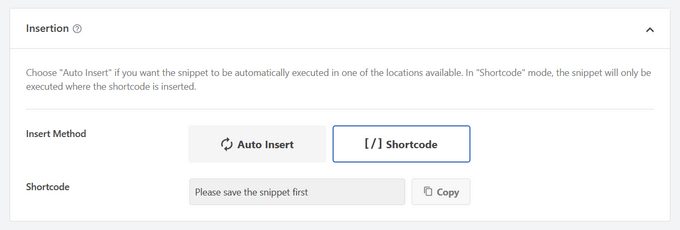
The auto-insert method will automatically insert the code snippet and execute it on your site.
Note that you can automatically run the code snippet only in the WP admin area, on your site’s front end, or anywhere. If you are unsure of this, you can opt for the second shortcode (Default) option.
The shortcode method works differently and doesn’t automatically insert the code snippet. With this method, when you save the code snippet, it will provide you with a shortcode specific to the code that you can use anywhere on your site.
Now, scroll down to the ‘Basic info’ section. Here you can add the basic details concerning your code.
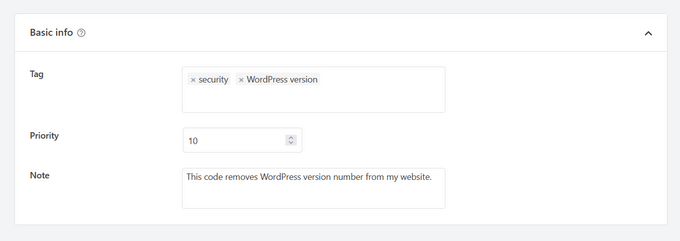
Here, you’ll witness three different options: Tag, Priority, and Note.
The tag option will help help you sort your codes by topics and functions. The priority field will help you assign a number to your code. This allows you to decide the order of the snippet that must be executed when you want to display various snippets at the same place on your site. By default, the priority is set to 10, and you can set it as per your choice. In the third ‘Note’ field, you can add notes about your code, like what it is for and more.
Next, look for the ‘Smart Conditional Logic’ section.

There you can enable or disable the auto-inserted options as per the set rules. You can change the settings as per your desire.
Once you are finished with all the settings, scroll up to the top of the screen. Then toggle the button from ‘Inactive’ to ‘Active.’
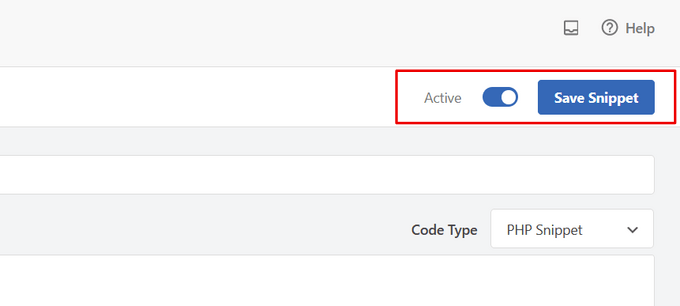
After that, click on the ‘Save Snippet’ tab to store your changes.
You can also save the code snippet without activating it. For this, simply save the snippet without clicking on the ‘Activate’ tab.
If you’ve saved and activated the code snippet to your site, it will be added to your site automatically if you opted for the auto-insert option or displayed ad a shortcode.
That’s it. You’ve successfully learned to add custom code in WordPress.
How to handle custom code errors?
If you make a mistake in your custom code while adding it to the function.php file of your theme or in your site-specific plugin, then your site will immediately become inaccessible, and you’d witness a 500 internal server error or a syntax error.
Now, to fix this error, you’ll need to manually inactive your code using an FTP client.
The best part of using the WPCode plugin is that it automatically detects a syntax error in the code snippet and deactivates the code immediately.
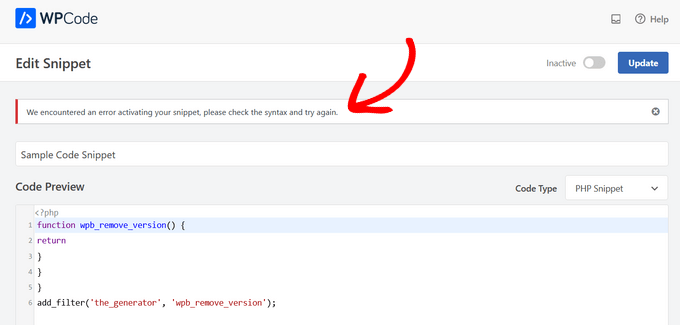
The plugin will also display an error message suggesting you fix the error and try it again.
Also, the plugin’s smart code snippet validation feature will also detect the error while adding the custom code.
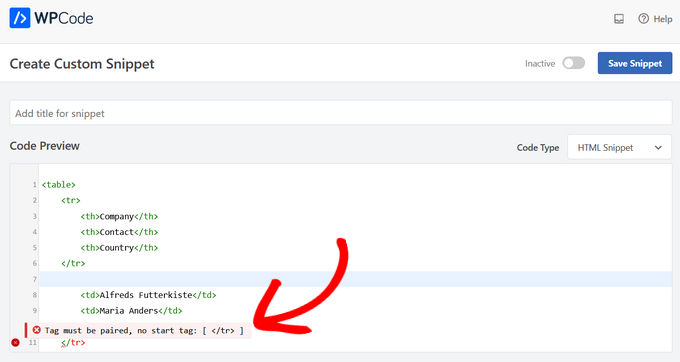
To fix this, you need to hover over the error message. This will provide you with instructions to fix it.
How to manage your custom code snippets in WPCode?
WPCode is a user-friendly plugin that comes with an intuitive interface. It lets you easily manage your custom code snippets on your WordPress site.
The plugin allows you to save your code snippets without activating them. You can simply activate or deactivate them as and when needed.
WPCode also allows you to filter your code snippets by their types and location and easily organize them using tags. 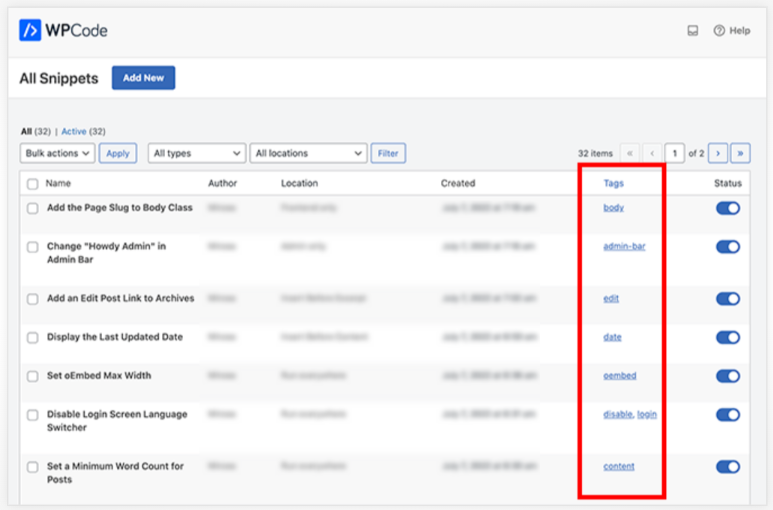
In addition, the plugin lets you export a specific code or bulk export all easily. For this, you can navigate to Code Snippets >> Tools and select the ‘Export’ button to export the code.
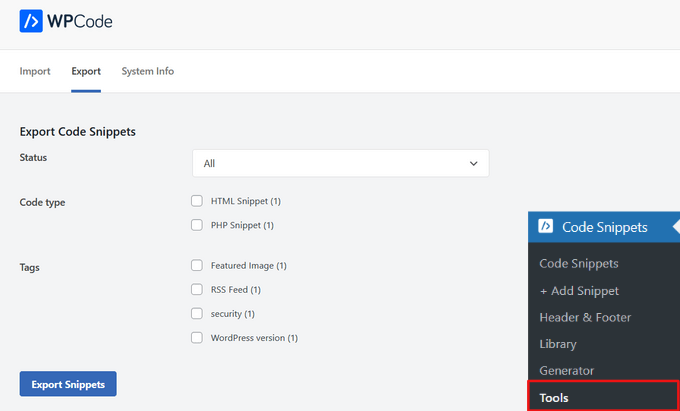
Furthermore, you can also easily import your code snippets to your site if you are migrating to a different server.
For this, you need to head over to the Code Snippets >> Tools >> Import page.

Then upload the export file, and you are done.
Conclusion
Adding custom code to your WordPress website is an important step to enhance its functionality and achieve your desired goal. We’ve used an effective code snippet plugin, WPCode, to ease your process. The WPCode plugin provides a simple and efficient way to add custom code to your website. It allows you to customize your website as per your requirements without impacting your website’s presence on the internet.
Here we’ve discussed the process in the simplest manner to assist you in easily adding the code and managing code errors. By following these easy steps, you can easily add custom code to your WordPress website using the WPCode plugin. However, it’s important to ensure that the code you add is safe, error-free, and compatible with your WordPress version.
With WPCode, you can conveniently add and manage custom code on your WordPress website without worrying about any technical issues. Hope this guide has assisted you in adding custom code to your site using WPCode effortlessly.
